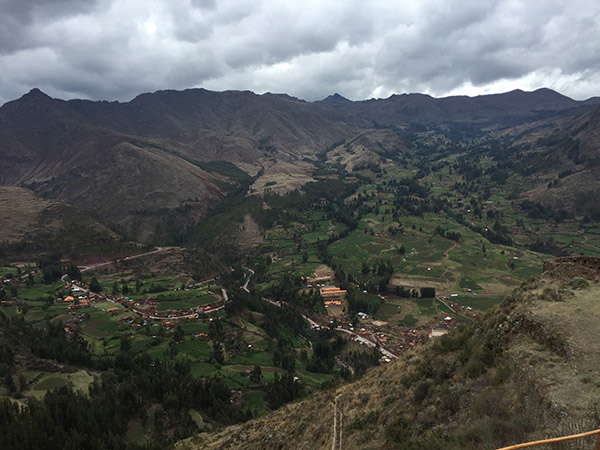Zach Bingham: Student Report from 2015 Alternative Winter Break in Peru
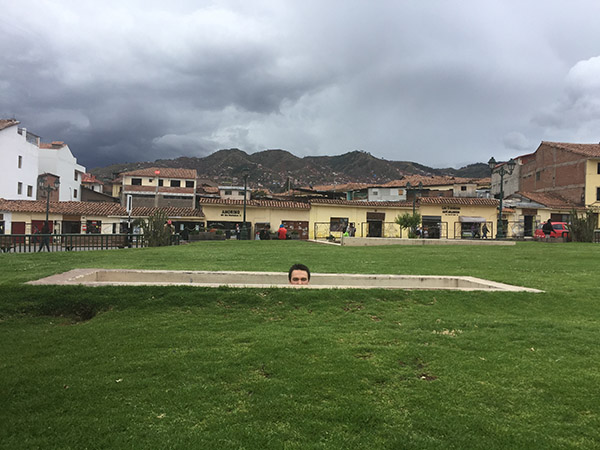
The engineering trip to Cusco, Peru was an amazing, relaxing, fun, and rewarding experience. This trip was far beyond any vacation or even service project I have ever been a part of. Getting fully immersed in the culture and providing a service to the native peoples was so fulfilling. We were there for seven total days with two extra days built in for travel. Three of those days were devoted to working on the service project, two devoted to exploring the incredible ruins of Cusco, Peru, and one day for recovery from the first travel day. Peru is a country basically divided into three sections, the flat beach part along the western border, the mountainous region in the middle, the Andes, and the section on the eastern border, which is rainforest. While in Peru, our group stayed in the middle mountainous section in Cusco, Peru. A fun fact about Peru is that it has the nickname Navel of the Earth. This is because it sits low right in the middle of the Andes mountain range. Our job mainly was to work hard for the people of the surrounding areas of Cusco. We were tasked with building safe cook stoves to replace the current ones in the locals’ homes.
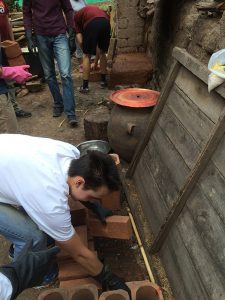
The previous traditional stoves that were made of mud and adobe in these houses were small, wood burning, and practically on the ground. This causes many health problems and presents a greater risk of injury. A household animal or child could run and fall into the fire and the hot cookware on the small stove. Not to mention the health risks of having livestock so close to where the food is prepared. Above all that, building these new stoves is essential because of the smoke inhalation problems. There was no ventilation or capability of channeling the smoke coming off the previous small stoves causing tremendous amounts of lung disease and other smoke-related diseases and problems. The new stoves that we built and put into place were much better. Still made of adobe, these new stoves are held together with a substance called barro. This substance is created by mixing mud with straw to increase the strength and durability of the structure in the long-term. These new stoves also are bigger, capable of accommodating two pots to cook at once, and are raised off the ground, solving the child and animal hazard; they also have a chimney to channel the smoke out of the house. Overall, the new stoves will greatly improve the lives of the people that received them. It was such a cool experience getting to serve people of another country. Even though there was a small language barrier, it didn’t matter in the long run, because the group could still communicate with the natives. It was so cool, one family even cooked for us and tried to get us to eat while we were there in appreciation of putting in their new stove.
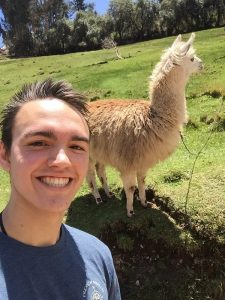
The two sight-seeing days of the trip were amazing. The ruins we saw around the city on the first day were incredible. From the pre-Incan structures in the Saqsaywaman archeological site to El Christo Blanco overlooking the entire city of Cusco, there was not a dull moment. On the second sight-seeing day we ventured out to the Sacred Valley to see several temples and even an old royal establishment at the top of one of the Andes Mountains. Needless to say, the view from the top was absolutely breath-taking. The next place we got to explore was the famous Pisac marketplace where we all got to wheel and deal with the local vendors. It was almost considered wrong if you didn’t try to haggle over the price of the merchandise. Our final stop that day was to a textile factory at Chinchero, where the workers showed us how they made the different colors in Incan clothing.
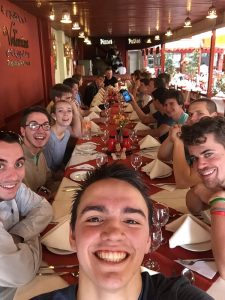
The food there was nothing like I expected. I automatically thought before getting to Peru that there would be lots of spicy food. I was very wrong. Peru is known for having found almost 4,200 different kinds of potatoes. In other words, we had potatoes at nearly every meal. They also had rice at nearly every meal and although the food was delicious, it was the same in a lot of places around the city. Meals were long and meant to take a lot of time as to give a chance to be social with the other people on the trip. The hotel we stayed at was very well-located. It was decently close to the main square of the town, several museums, and also lots of shops. One thing I do not miss is the inability to drink from the faucet. Something I do miss though are the incredible views atop mountains overlooking valleys that stretched out as far as you could see, and the view from El Christo Blanco looking out atop the city. Overall it was an amazing trip and I highly recommend the College of Engineering’s travel program to anyone who has the capability and availability of taking part in it.
